MacDonald Hardwoods would like to take this opportunity to educate our customers on the different grades of hardwood flooring. There are many options available, and it can be confusing for some people to understand the differences.
We want you to make an informed decision when choosing your flooring, so we have put together this guide to help you!
The Importance of Understanding Wood Grading

Many homeowners invest in hardwood flooring for a timeless, classic look as well as improved home value. Knowing the different grades of hardwood available is essential when selecting your dream floors.
A higher grade of hardwood might feature fewer knots and flaws, while a lower grade may have more variation in the wood’s grain pattern or even some small natural imperfections. Choosing the grade that meets your expectations and budget is important since hardwood can cost more than other types of flooring.
Also, different grades are better suited for different spaces depending on traffic and moisture levels. For example, if you’re looking for high-impact resistance, a higher grade wood may be preferable for a family room that sees heavy use while lower grades are often recommended in bathrooms and areas prone to water spills.
The grading process is typically done by the manufacturer or supplier of the hardwood flooring. Therefore, it is important to choose a reputable and reliable source like MacDonald Hardwoods to ensure that you are getting high-quality wood that meets industry standards.
Ultimately, putting thought into the specific grade of your hardwood will help ensure you get long-lasting appeal and durability out of this beautiful flooring option.
The Different Types of Wood Used in Hardwood Flooring
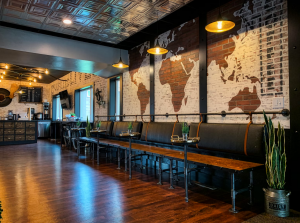 [Image source: Unsplash]
[Image source: Unsplash]
There are various types of wood that can be used in hardwood flooring, each with its own unique characteristics and features. Some of the most common types of wood used in hardwood flooring include:
Oak: Oak is a popular choice for hardwood flooring due to its durability and versatility. It is available in a range of colors, from light to dark, and has a distinctive grain pattern. Oak is also resistant to moisture and wear, making it a good choice for high-traffic areas.
Maple: Maple is a hard and dense wood that is known for its light color and fine grain pattern. It is a popular choice for those who want a light and airy look for their floors. Maple is also resistant to wear and moisture, making it a durable choice for high-traffic areas.
Cherry: Cherry is a soft and elegant wood with a rich, warm color. It is known for its subtle grain pattern and smooth texture. Cherry is a good choice for formal or high-end settings, as it adds a touch of sophistication and refinement to any space.
Walnut: Walnut is a dark and luxurious wood with a rich, chocolate-brown color. It is known for its dramatic grain pattern and smooth texture. Walnut is a good choice for those who want a bold and sophisticated look for their floors.
Birch: Birch is a hard and durable wood with a light, creamy color. It is known for its fine grain pattern and smooth texture. Birch is a good choice for those who want a light and neutral look for their floors.
In addition to these types of wood, there are also various species of wood that can be used in hardwood flooring. Each species has its own unique characteristics and features, such as color, grain pattern, and durability. Understanding the different types and species of wood available can help you select the best option for your needs and preferences.
Grades
Premier Grade
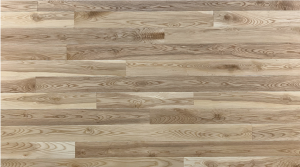
[Image source: Superior Flooring]
Premier grade hardwood flooring is the highest quality and most expensive option available. It is characterized by a consistent and even color, with minimal knots, blemishes, or other imperfections. The wood is carefully selected and graded to meet the highest standards of quality. Premier grade hardwood is also known for its durability and longevity, as it is made from high-quality wood that is less prone to wear and damage.
This grade is ideal for formal or high-traffic areas where a flawless appearance is desired. It is also a popular choice for those who want a clean and modern look for their floors. Premier grade hardwood is a good investment, as it can add value to your home and last for many years with proper care and maintenance.
Select Grade
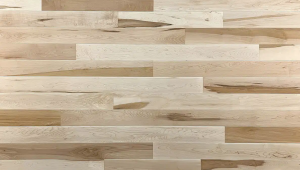
[Image source: Superior Flooring]
Select grade hardwood flooring is a step down from premier grade in terms of quality and price. It is still a high-quality option, but may have more visible imperfections such as knots or mineral streaks. These imperfections add character and depth to the wood, making it a popular choice for those who want a more rustic or natural look.
Select grade hardwood is also suitable for high-traffic areas, but may not be as durable as premier grade due to the presence of imperfections. It is a good option for those who want a high-quality floor at a more affordable price.
Heritage Grade
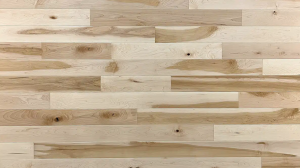 [Image source: Superior Flooring]
[Image source: Superior Flooring]
Heritage grade hardwood flooring is a mid-range option that offers a balance of quality and affordability. It is characterized by a more varied appearance, with a mix of colors and textures. This grade is ideal for those who want a more rustic or antique look, as it may have more visible imperfections such as knots, wormholes, and other natural characteristics.
Heritage grade hardwood is also known for its durability and longevity, as it is made from high-quality wood that is carefully selected and graded to meet certain standards of quality. It is a good choice for those who want a unique and authentic look for their floors, but want to avoid paying the premium price for the premier grade.
Heritage Grade – Live Sawn
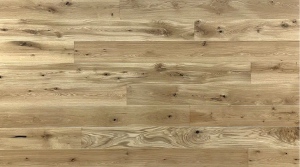 [Image source: Superior Flooring]
[Image source: Superior Flooring]
Live sawn hardwood flooring is a subcategory of heritage grade. It is made from logs that are cut perpendicular to the growth rings of the tree, resulting in a more varied and rustic appearance. The wood is then milled into planks, which are then installed as flooring. Live sawn hardwood is known for its unique, one-of-a-kind appearance, with a mix of colors and grain patterns.
It is a popular choice for those who want a truly unique and authentic look for their floors. Live sawn hardwood is also known for its durability and longevity, as it is made from high-quality wood that is carefully selected and graded to meet certain standards of quality. It is a good option for those who want a rustic and antique look for their floors, but do not want to sacrifice quality or durability.
Conclusion
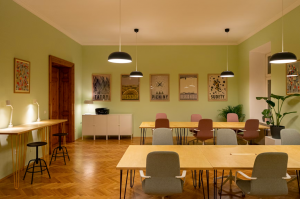 [Image source: Unsplash]
[Image source: Unsplash]
In conclusion, there are various grades of hardwood flooring available on the market, each with its own unique characteristics and features.
Premier grade is the highest quality and most expensive option, with a flawless and consistent appearance. Select grade is a high-quality option with more visible imperfections, adding character and depth to the wood. Heritage grade is a mid-range option with a more varied appearance, ideal for those who want a rustic or antique look. Live sawn hardwood is a subcategory of heritage grade, with a unique and one-of-a-kind appearance.
Understanding the different grades of hardwood flooring can help you make an informed decision when selecting the best option for your home. Consider your personal style preferences, budget, and the intended use of the space when choosing the right grade for your needs.
Take your time in choosing the right grade for you, as hardwood flooring can last a lifetime with proper care and maintenance regardless of the grade. Most people need a nudge in the right direction and that’s where MacDonald Hardwoods comes into play.
For those in the surrounding Denver area, simply give us a call and we’ll be more than happy to help you find the perfect hardwood flooring for your home. Having your floors installed by the right company can make all the difference in the long run, so don’t forget to take advantage of our expert advice.
Reach out today!